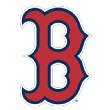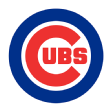The hard facts of autumn have come to bear on all but a small handful of teams. Eight of the 10 playoff squads have been established, with three -- the Oakland Athletics, Tampa Bay Rays and Cleveland Indians -- fighting for the final two spots. For everyone else, it's wait 'til next year.
That includes four marquee franchises that put forth contenders that fell short enough to rate among the year's true disappointments; that's certainly the case when it comes to the defending world champions, the Boston Red Sox.
What follows here is a quick rundown through these close-but-no-cigar teams and what their top priorities should be if they want happier outcomes in 2020. All statistics are through Tuesday.
 Boston Red Sox (eliminated Saturday): Shore up right side of infield
Boston Red Sox (eliminated Saturday): Shore up right side of infield
Rotation, bullpen, lineup -- the defending champions had shortcomings in every area. Injuries to last year's hard-worked starters, particularly Chris Sale and David Price, exposed the team's lack of rotation depth. Only Eduardo Rodriguez and Rick Porcello made more than 25 starts, and the latter, a pending free agent, has been dreadful (5.56 ERA, 4.88 FIP). The bullpen was left short by the failure to adequately replace free agents Craig Kimbrel and Joe Kelly, particularly early in the season; by the time the unit finally started clicking in August, it was too little, too late.
The Red Sox will need to add depth at both ends of their pitching staff, but one spot that they particularly need to fix -- or rather, two -- and that looked quite threadbare all season long was the right side of their infield. With Dustin Pedroia playing just three games and having apparently finally run out of patience with his surgically repaired left knee, and with Mitch Moreland and Steve Pearce combining for just 116 games also due to injuries, that right side is a problem. The team's combined production at second base is just 0.1 fWAR (with a 77 wRC+), while it is minus-0.3 WAR (with an 88 wRC+) at first.
Rookie Michael Chavis, a corner infield prospect who made a strong initial impact when pressed into service at the keystone but faded drastically in the second half, might figure into the solution; and so could Brock Holt, though he is hitting free agency alongside Moreland and Pearce. The bottom line, however, is that the team needs some dependable bats to lengthen the lineup, particularly if designated hitter J.D. Martinez decides to opt out of his contract.
 Chicago Cubs (eliminated Wednesday): Bullpen and center field
Chicago Cubs (eliminated Wednesday): Bullpen and center field
With eight losses in a row and 13 in their past 19 games, it's easy to identify what has gone wrong for the Cubs in September. They've had a lack of dependable starting pitching outside of Yu Darvish and Kyle Hendricks, awful bullpen performances in high-leverage spots (their .436 wOBA in such situations this month ranks 29th out of 30) and some bad breaks with injuries (Javier Baez, Anthony Rizzo, Kris Bryant, Addison Russell) that revealed this team's lack of depth relative to the past few seasons.
In the larger sample size, two areas of weakness really stand out. The bullpen, despite ranking third in the National League in ERA (3.91), is just eighth in fWAR (1.8). Kimbrel has only intermittently pitched well since joining the team in late June; but it is the struggles of higher-leverage guys such as Brad Brach (since released), Carl Edwards Jr. and Pedro Strop, as well as the all-too-predictable loss of Brandon Morrow to elbow troubles, that reduced the team's margin for error. That needs fixing.
So too does center field, where Albert Almora Jr., Jason Heyward and Ian Happ have combined for just a 77 wRC+ and 0.2 WAR. At this stage of his career, Heyward's bat (101 wRC+) is a better fit for center field than right, but the defensive metrics suggest his glove is stretched in the middle. As tempting as it might be to retain hot-hitting deadline acquisition Nicholas Castellanos, his terrible glove work (minus-5.7 runs via ultimate zone rating and minus-10 via defensive runs saved) would make for a much-weakened defense in such an alignment.
 New York Mets (eliminated Wednesday): Bullpen and defensive help
New York Mets (eliminated Wednesday): Bullpen and defensive help
The work that first-year general manager Brodie Van Wagenen undertook last winter created a lot of buzz throughout the baseball world, but it wound up compromising the 2019 Mets in crucial ways -- and we're not even talking about the two fast-climbing first-round picks he traded to the Seattle Mariners.
From among the additions to the Mets' lineup, both free agent Wilson Ramos and trade acquisition J.D. Davis have helped bolster an offense that ranks second in the NL in wRC+, but they've offset much of their value with subpar defense. Ramos has hit for a 106 wRC+ and has been 12 runs below average defensively according to DRS), while Davis (134 wRC+) has been 5.8 runs below average via UZR and 18 below via DRS while splitting time between left field and third base. Trade acquisition Robinson Cano, whose 95 wRC+ is his worst mark since 2008, has been subpar, as well (-1.0 UZR, -5 DRS). As a whole, the team is second to last in the NL in UZR and dead last in DRS. Those are wins flying out the door, wins that would come in handy in a race for a wild-card spot.
Meanwhile, after a stellar 2018 season, Edwin Diaz has been a disaster (5.59 ERA, 4.39 FIP, 0.1 fWAR), as has Jeurys Familia (5.90 ERA, 5.05 FIP, -0.3 WAR). The rest of the cast, outside of the excellent Seth Lugo, hasn't been up to the task, either. In fact, if you remove Lugo's 78-inning body of work from the equation, then the remainder of the bullpen has produced a ghastly 5.46 ERA and minus-1.3 WAR -- yes, they've been more than a win below replacement level. No team can expect to compete for a playoff spot with that, not even with a rotation of five Jacob deGroms.
 Philadelphia Phillies (eliminated Tuesday): Starting pitching
Philadelphia Phillies (eliminated Tuesday): Starting pitching
According to Spotrac, the Phillies' bullpen has lost more player-days (944) and dollars ($24.25 million) to the injured list than any other team's. In terms of preseason forecasts, five of their top six relievers (David Robertson, Seranthony Dominguez, Tommy Hunter, Pat Neshek and Adam Morgan) have gone down, all for anywhere from 2½ months to 5½ months. Thus, a unit that was projected to be the majors' fourth best has instead been its fourth worst (0.3 fWAR).
All of that was tough to foresee. That's not the case for the rotation's performance. For all of the money the Phillies spent last winter and all of the talent they added -- namely Bryce Harper, Andrew McCutchen, J.T. Realmuto and Jean Segura, as well as Robertson -- none of it was devoted to beefing up the starting pitching cast. Thus, when Aaron Nola took a significant step back from Cy Young contention and Jake Arrieta struggled due to (and was ultimately felled by) a bone spur in his elbow, the rest of the bunch -- Zach Eflin, Jerad Eickhoff, Nick Pivetta, Vince Velasquez and latecomers Jason Vargas and Drew Smyly -- simply wasn't up to the task. The first four from that group were forecast for a combined f8.0 WAR but managed just 1.6, as their strikeout, walk and homer rates almost entirely moved in the wrong directions. The Phillies simply can't afford to repeat such a mistake this winter, even if it means writing more big checks to free agents.
